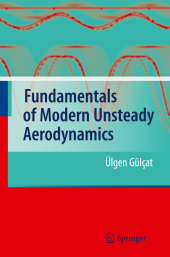 Neuerscheinungen 2014Stand: 2020-02-01 |
Schnellsuche
ISBN/Stichwort/Autor
|
Herderstraße 10
10625 Berlin
Tel.: 030 315 714 16
Fax 030 315 714 14
info@buchspektrum.de |

Ülgen Gül‡at
Fundamentals of Modern Unsteady Aerodynamics
2011. 2014. xii, 341 S. 235 mm
Verlag/Jahr: SPRINGER, BERLIN; SPRINGER BERLIN HEIDELBERG 2014
ISBN: 3-642-43105-4 (3642431054)
Neue ISBN: 978-3-642-43105-0 (9783642431050)
Preis und Lieferzeit: Bitte klicken
This introduction to the principles of unsteady aerodynamics covers all the core concepts, provides readers with a review of the fundamental physics, terminology and basic equations, and covers hot new topics such as the use of flapping wings for propulsion.
In this textbook, the author introduces the concept of unsteady aerodynamics and its underlying principles. He provides the readers with a full review of fundamental physics of the free and the forced unsteadines, the terminology and basic equations of aerodynamics ranging from incompressible flow to hypersonics. The book also covers the modern topics concerning the developments made during the last years, especially in relation to wing flappings for propulsion. The book is written for graduate and senior year undergraduate students in Aerodynamics, and it serves as a reference for experienced researchers. Each chapter includes ample examples, questions, problems and relevant references.
INTRODUCTION.- FUNDAMENTAL EQUATIONS.- INCOMPRESSIBLE FLOW ABOUT AN AIRFOIL.- INCOMPRESSIBLE FLOW ABOUT THIN WINGS.- SUBSONIC and SUPERSONIC FLOWS.- TRANSONIC FLOW.- HYPERSONIC FLOW.- MODERN SUBJECTS.- AERODYNAMICS: The OUTLOOK for the FUTURE
From the reviews:
"This monograph, giving the progress in unsteady aerodynamics during about a century, is written as a graduate textbook. An additional aim is to provide the practicing engineers with the knowledge of the most recent developments in unsteady aerodynamics. ... the author presents a three-dimensional analysis of swept wings with extra lift created by leading edge separation. Ten appendices supplement the formulae used in the basic text." (Boris V. Loginov, Zentralblatt MATH, Vol. 1216, 2011)


